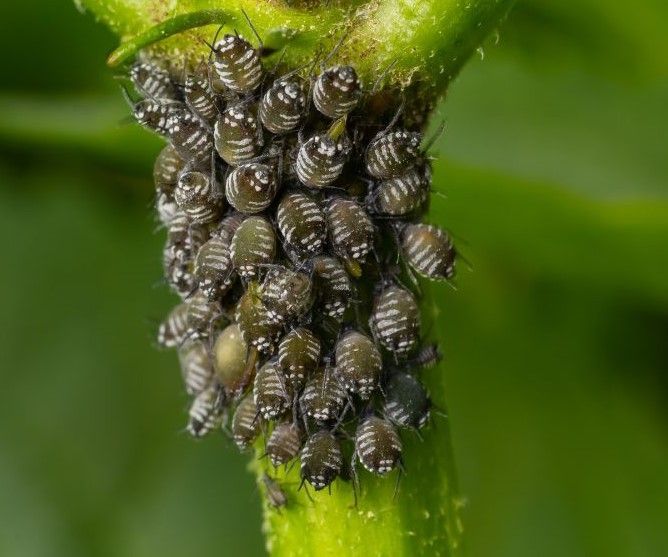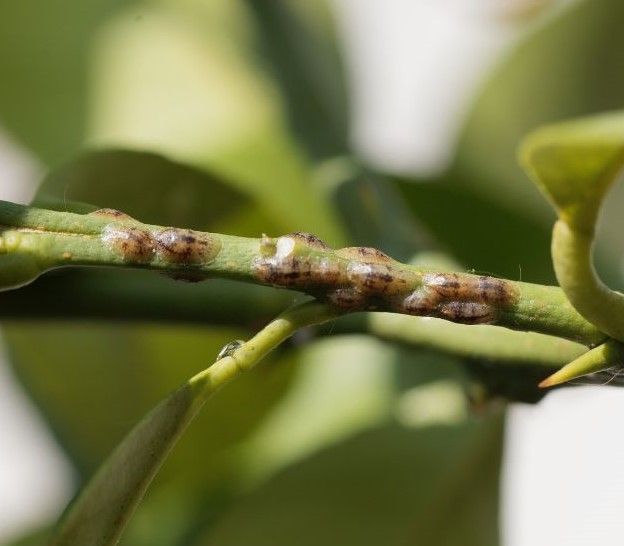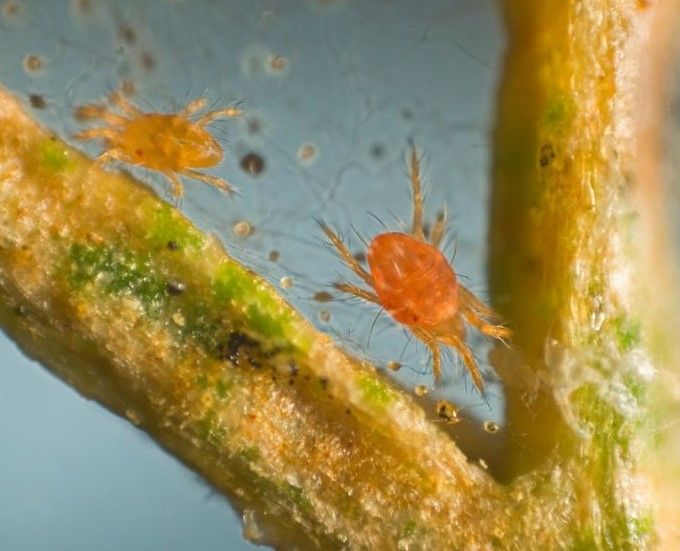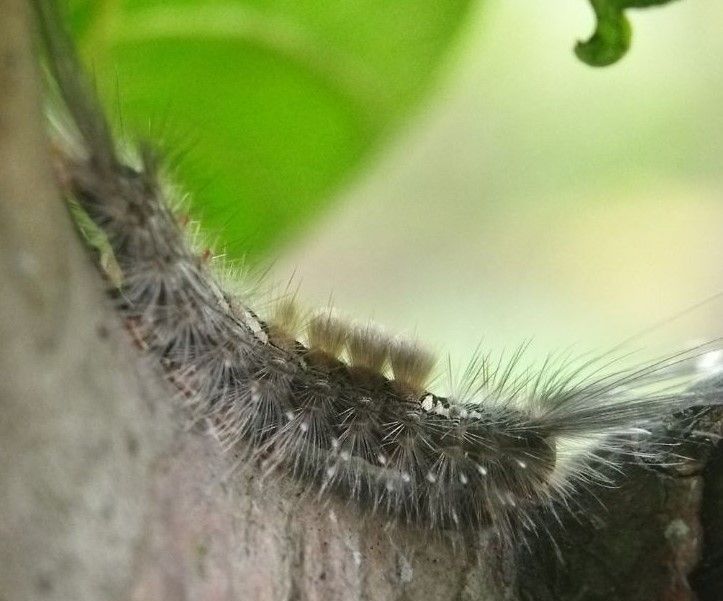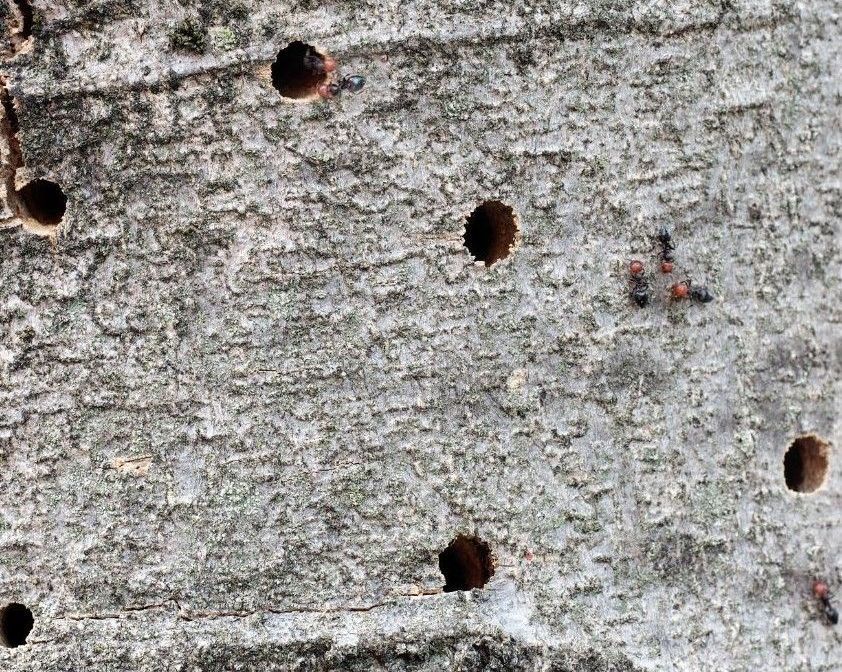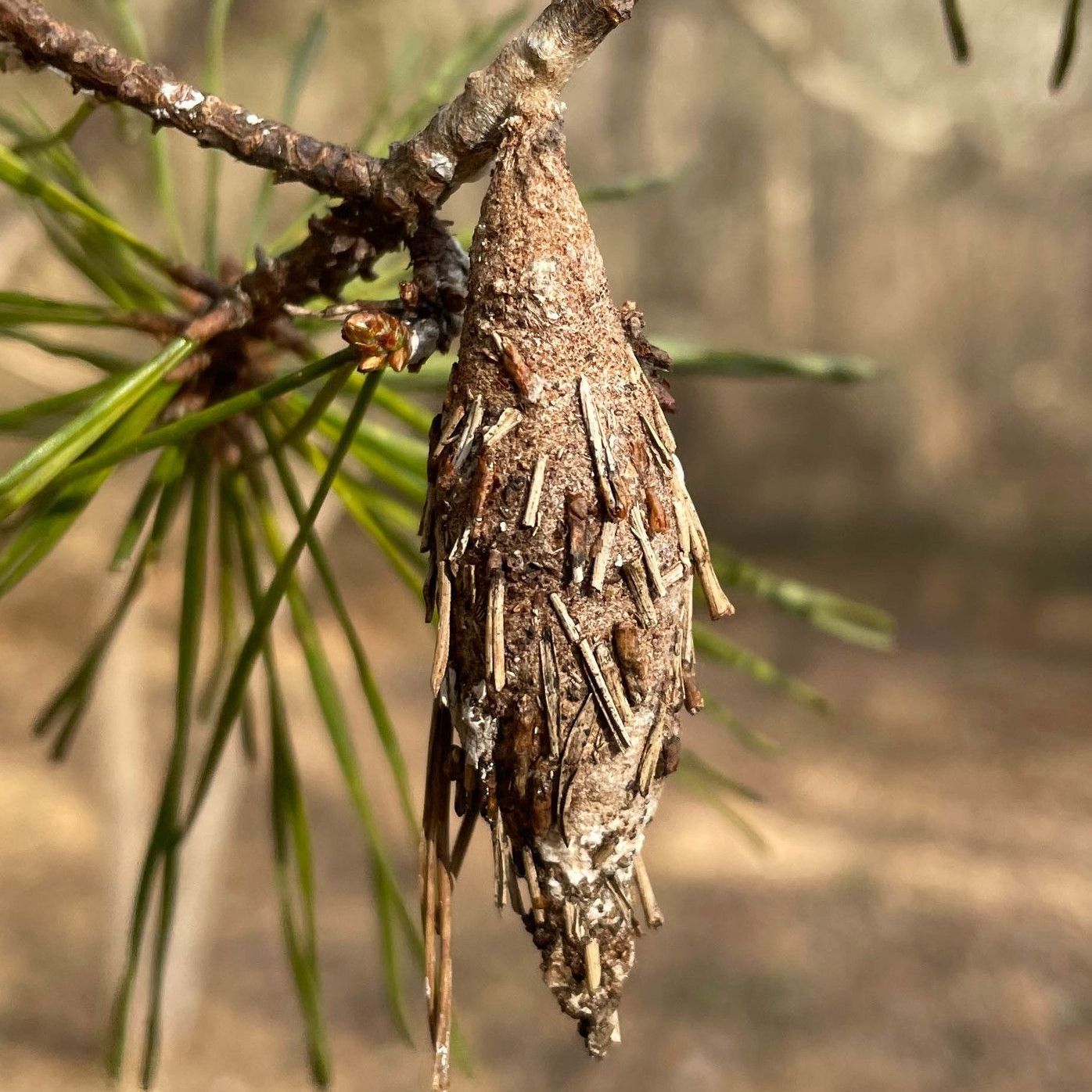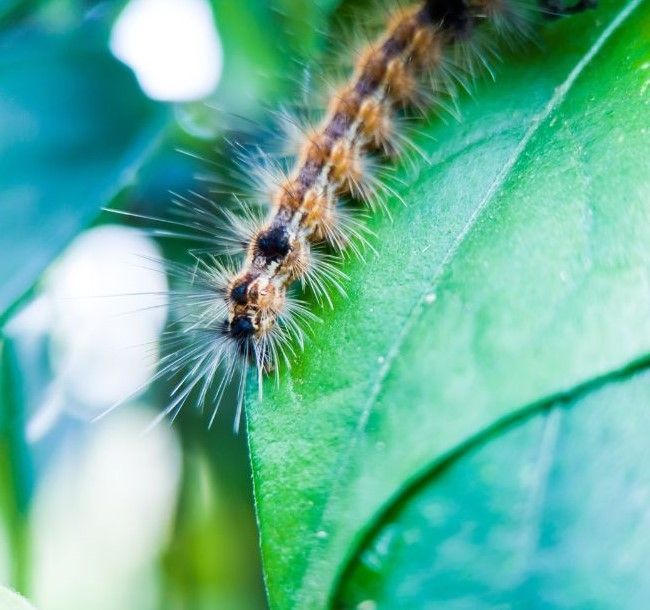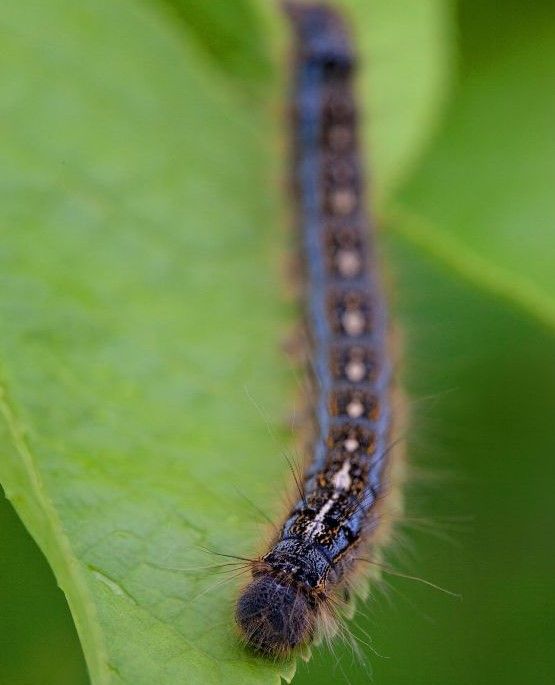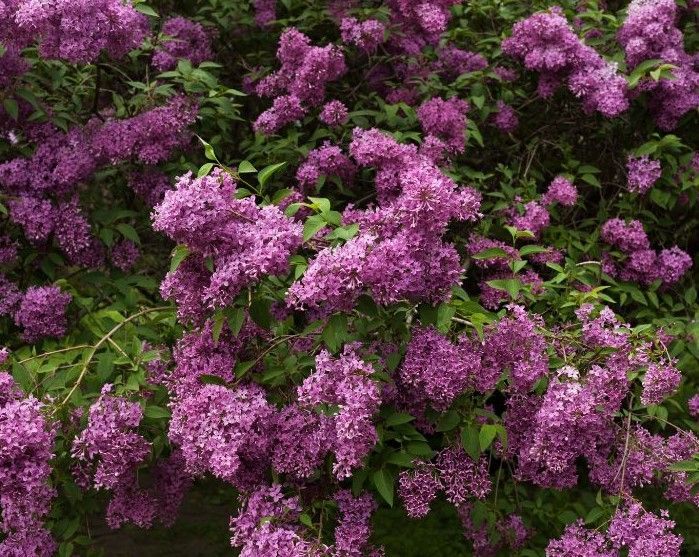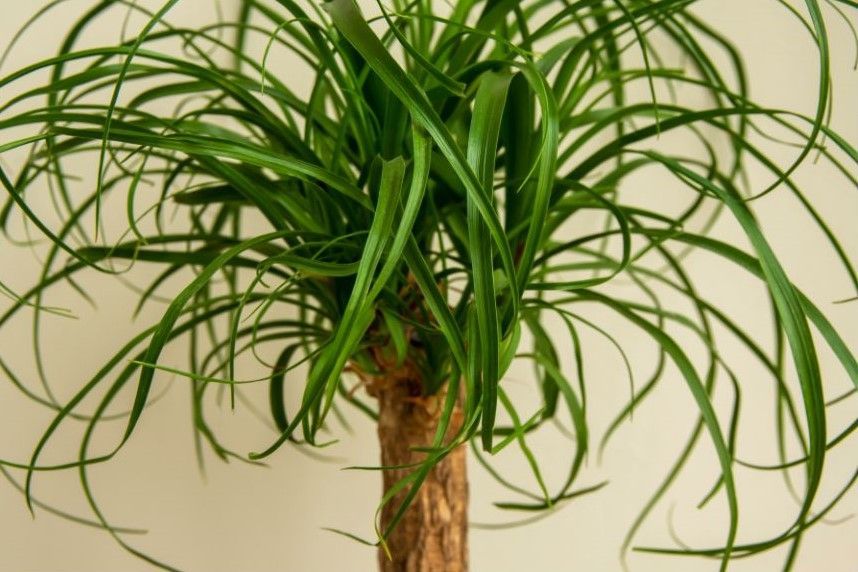Aphids feed on tree sap by piercing the plant tissue, which stunts growth and causes leaves to curl, wilt, or yellow. The honeydew they excrete can lead to sooty mold, which reduces photosynthesis and weakens the tree further. Large infestations can significantly impact the health of young trees or stressed mature trees.
Identification: Aphids are tiny (1-2 mm) and can be green, black, brown, or pink, depending on the species. They gather in large colonies on the undersides of leaves and along stems. Sticky honeydew on leaves or nearby surfaces is another telltale sign.
Management: Encourage natural predators like ladybugs and lacewings, which feed on aphids. Use horticultural oils during late fall to smother overwintering eggs on tree bark. Insecticidal soaps or neem oil can be used in the growing season, though these are less effective in late fall.



